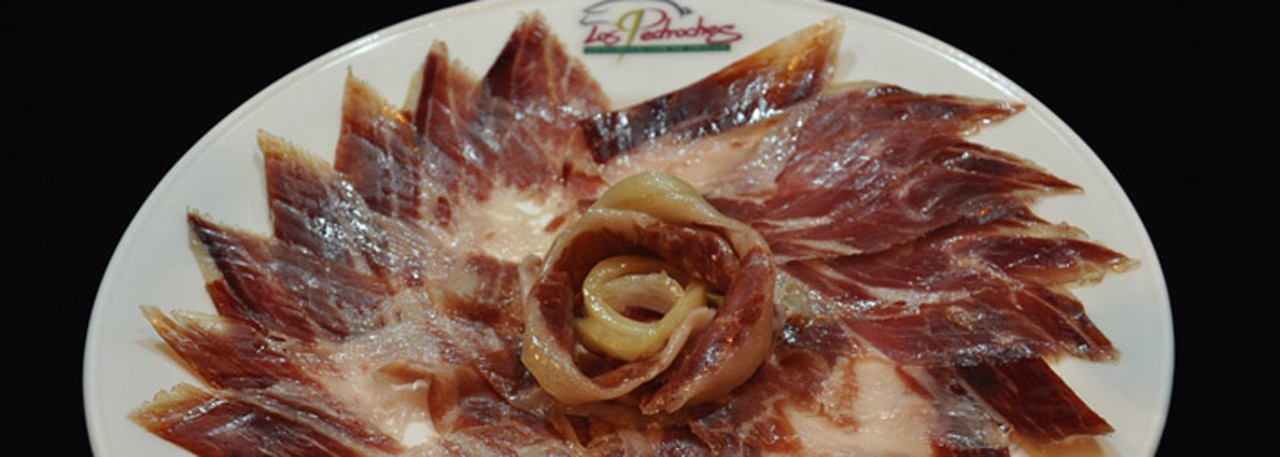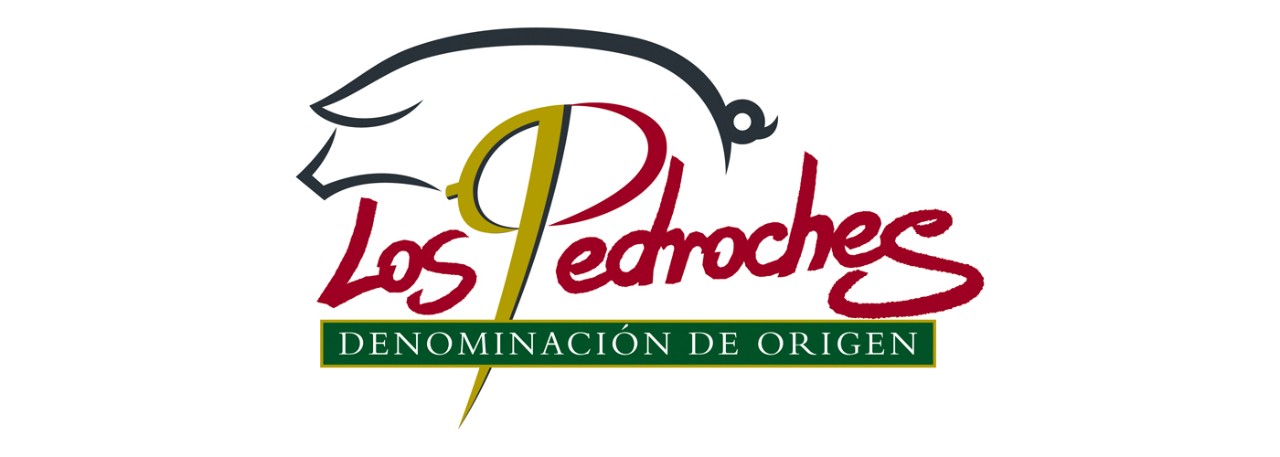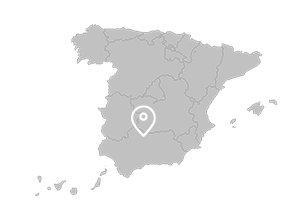.png.transform/rendition-xs/image_image%20(1).png)
Los Pedroches PDO
Legs and shoulders of ham from Ibérico breed pigs, in all its stocks, also permitting animals with a minimum of 75% of this breed and a maximum of 25% of the Duroc and Duroc Jersey breeds. The labeling distinguishes between Ibérico Puro (pure) and Ibérico.
Tasting notes
The meat flavor is not salty and can be sweet-tasting, with a pleasant and characteristic aroma. The texture is not very fibrous. The color when cut is characteristic, varying from pink to a purplish-red, and the appearance shows fat marbling in the muscle. The fat is shiny, a yellowish pinky-white, aromatic and pleasant tasting, and the consistency varies depending on the amount of acorns in the pig's diet.
Other notes
External shape: elongated, slender, outlined by the so-called Serrano "V"-shaped cut. It retains the hoof. The hams are cured for a minimum of 12 months for shoulders and 18 months for legs.
Production / Processing method
Rearing includes taking the pigs up to the mountain to forage for acorns, as the final stage in the fattening process before slaughter. This ensures two key features: firstly, fat content. The more acorns consumed by the pig, the lower is the melting point of the fat in the ham. The fat also gives the hams a highly valued aroma and juicy texture. Secondly, the physical exercise undertaken by the animal to get the acorns gives the meat a more dense muscular texture and better fat distribution.
After checking the breed, age and correct fattening process, the animals are slaughtered. Butchering involves separating the extremities and starting the curing process in natural surroundings so they acquire the typical color, flavor and aroma of the protected legs and shoulders of ham. This production process consists of the following stages:
- Salting: this ensures ordinary salt enters the muscle mass, in order to encourage drying and preservation of the meat. This process takes place at temperatures of between 0 and 5ºC / 32 and 41ºF and in a relative humidity of over 80%. The salting time varies depending on the weight of the ham, and should be from 0.7 and 1.2 days per kilo of weight.
- Washing: consists of eliminating surface salt from the hams by washing with water and leaving to drain.
- Settling: during this stage the salt spreads throughout the inside of the ham until it filters into all the tissues. There is a slow and gradual drop in moisture content, and the hams become more consistent. This process takes place in rooms at temperatures of between 0 and 6ºC / 32 and 42.9ºF and in a relative humidity of between 75 and 85%. The length of time during which the hams are in these rooms depends on their weight, and is normally from 30 to 90 days.
- Drying-Maturing: during this stage the gradual drying process continues and the ham sweats, enabling the fat to spread through the muscle fibers, which once impregnated, will retain the aroma. This is done in natural drying areas. The process takes about six months.
- Ageing in cellars: this is always done in natural cellars. The hams age in these areas for a minimum of 18 months for legs and 12 months for shoulders. During this process the shoulders and legs of ham acquire their characteristic texture, smell, flavor and appearance, produced by the micro-climate and the micro flora in the area of Los Pedroches.
Geography / Relief and climate
The northern area of the province of Córdoba has around 300,000 hectares / 741,316.5 acres of holm oak pasture land, a combined free range and farming system, developed over centuries. There has always been extensive livestock farming in the area, including rearing and selling Ibérico pork, using the animal food resources in the holm oak forest, particularly acorns. The average acorn harvest is about 1,000 kg/ha.
The extraordinary quality of the flavor and aroma found in the protected legs and shoulders of ham is linked to the highly distinctive and exclusive rearing and production methods used in the open or mountain pasture system (known as montanera). This makes use of the natural pastures in the meadows at the end of the fattening process, consisting mainly of acorns, grass, pastures and stubble, depending on the time of year. This is the fundamental factor that gives the protected product a fat content that is impossible to imitate with other production systems.
The pasture land in the north of the province of Córdoba contain the greatest number of holm oak in the whole of Spain, and this exerts a major influence on the type of acorns consumed by the pigs in the geographical area of this DO. It is also the only area in the country where acorns from the Portuguese oak, one of the three types in the Quercus family growing in the meadows here, actually reach full maturity. This happens about 20 days before the other Quercus species, bringing forward the period when the Ibérico pigs are taken to the mountainside, which is an extremely important factor in defining the salient features of the protected products.
The area lies at an altitude of about 700 m / 2,296.5 ft above sea level and has a dry, cold continental climate, the conditions that prevail during the production period.
Regulatory Council
Consejo Regulador de la DOP Los Pedroches
C/ Pozoblanco, 3
14440 Villanueva de Córdoba (Córdoba)
Tel: (+34) 957 121 084
informacion@jamondolospedroches.es
www.jamondolospedroches.es
Sources:
The hams are cured for a minimum of 12 months for shoulders and 18 months for legs.


- /content/dam/en/icex-foodswines/images/products/ibérico-ham---pork/los-pedroches-pdo/Los%20Pedroches%20PDO%20carr1.jpg
- /content/dam/en/icex-foodswines/images/products/ibérico-ham---pork/los-pedroches-pdo/Los%20Pedroches%20PDO%20carr2.jpg

Villanueva de Córdoba (Andalusia)
